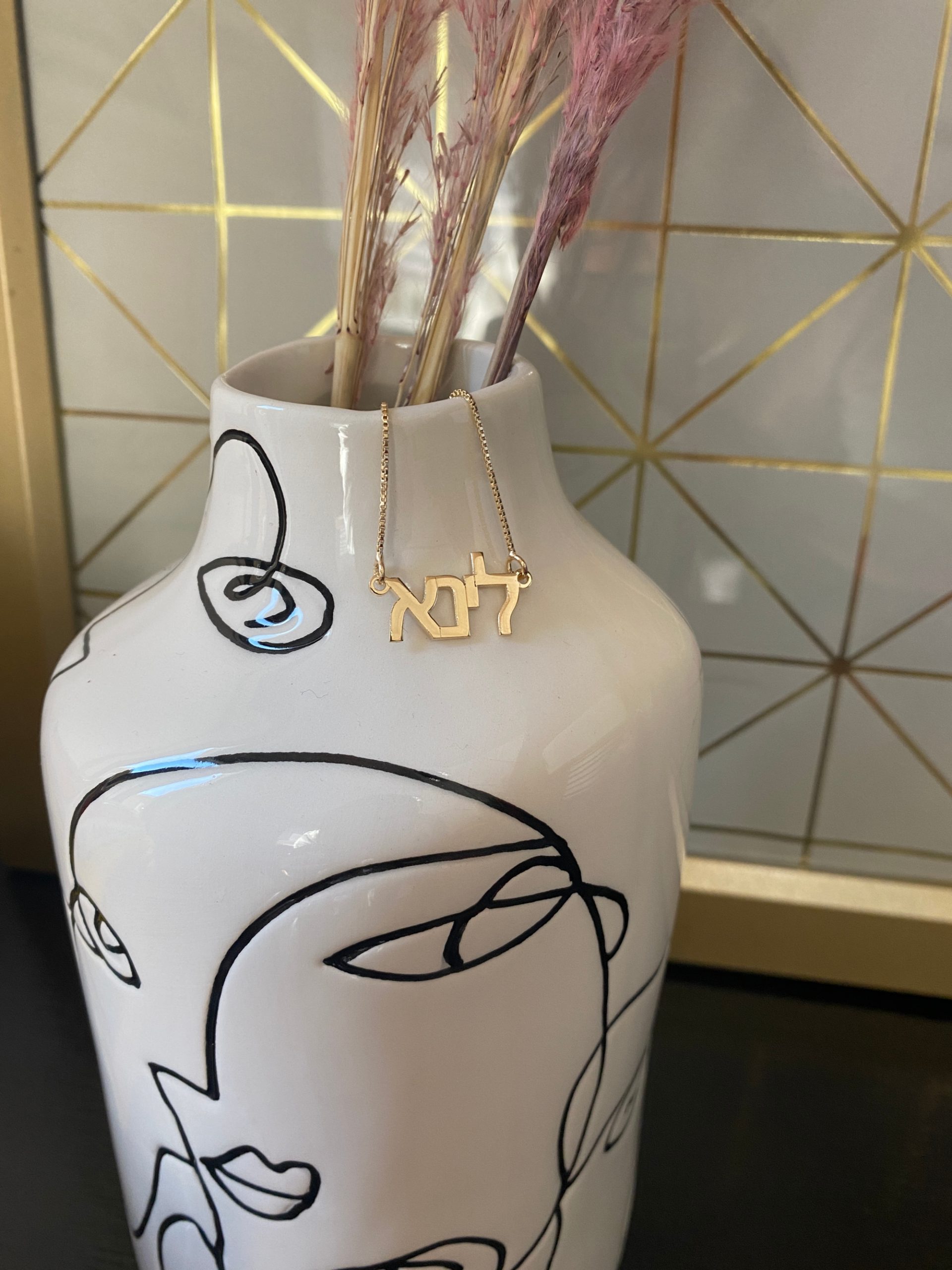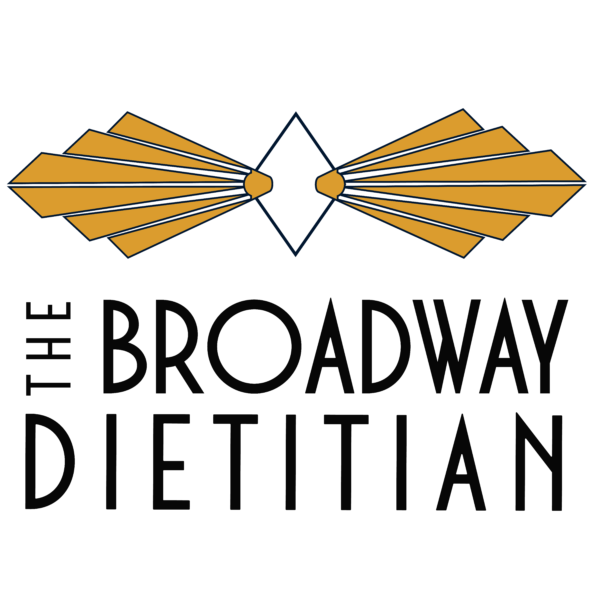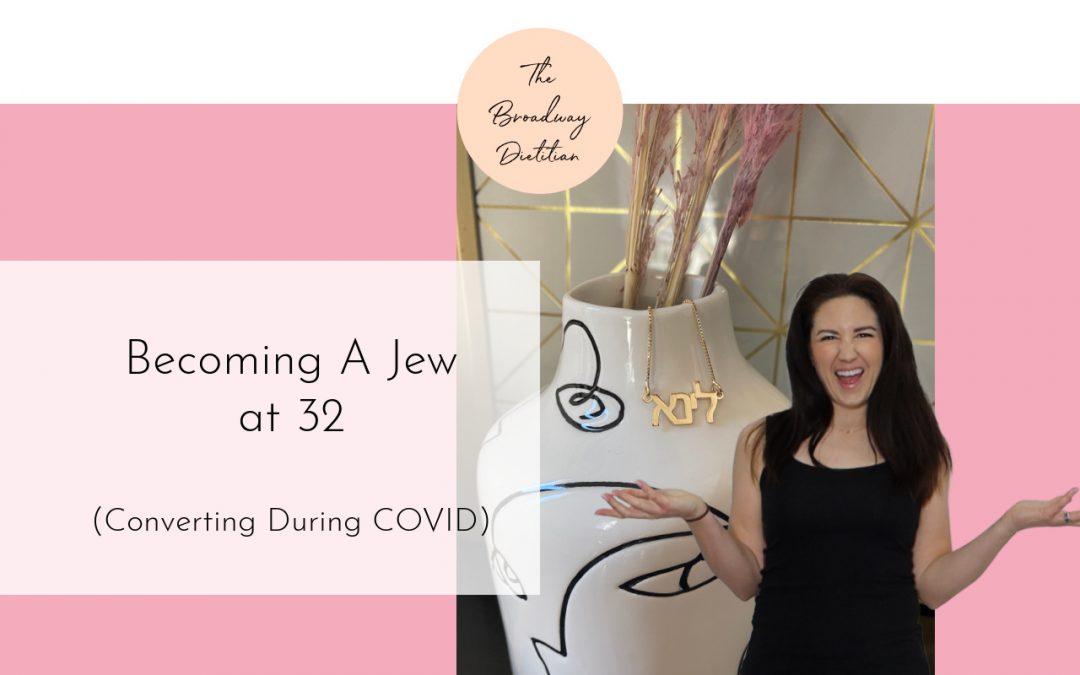Oy, 2 questions I get a lot are, “why did you convert when no one in your family is Jewish?” and “what did you have to do to convert?”
I come from a very prodestant midwestern family. Not overly religious, but we went to church and Sunday school. I’m broadly Eastern-European.
I moved to California and married the Cali equivalent. Switching from one 6-letter Scottish last name to another 6-letter Scottish last name.
I won’t go into all the details on WHY I converted as an adult, everyone’s story is personal, but I will explain the process of becoming a Jew, as I had no idea what to expect!
My process took about 2 years once I decided I wanted to pursue Judaism. This sounds crazy from a Christian background, where to be a Christian you just believe in Jesus as the son of God and personal savior, you get baptized, but that’s it. It can be done in a moment. I was super involved in church/church groups in college and saw the process a lot.
Becoming Jewish is much more involved. The “people of the book” as Jews lovingly call themselves, they want to be sure you are making a very informed decision and think about how the religion will fit in your life.
I remember the episode of Sex and the City, when Charlotte goes to convert for marriage, and gets turned away 3 times. I was nervous this was the way it always happened. Now, I think that show was dramatizing the experience, and I was never dissuaded from the process, but everyone made sure I really thought about why I was doing it.
So let’s chat about what really happened in my conversion process, and what to expect in a reform conversion.
(*disclaimer, this was my experience process, so yours might be a bit different especially if you are converting to an orthodox religion.)
Community involvement
Part of the process is being an involved member of the local Jewish community. Judaism is very family/community oriented. In fact I think there are schools of thought that you cannot be a Jew in isolation. Regardless, you need to get involved in the Jewish community to learn about the teachings, beliefs (which vary widely! A common joke is that among 3 Jews are 5 different opinions), and the culture especially in regards to holidays.
Jews are not just a religion, but also a race/ethnicity. So you can be Jewish and not religious (secular), or you can be a religious Jew but not have Jewish blood. All are true Jews.
I started my real process to Judaism by attending synagogues in my community. It was difficult at first, as I am naturally shy in new groups of people, and I didn’t know the format of the services. In the reform congregations I attended I felt very welcome and was encouraged to ask questions.
The weekly service at the most basic level is a Friday night Shabbat service. Some synagogues will also have Saturday morning services, and other services throughout the week.
Having grown up in Presbyterrian and Lutheran churches, the music and liturgy was different (so much Hebrew!), but overall the flow of the service was very familiar, including the benediction being verbatim what was said in many churches I attended. This makes sense as Christianity came from Judaism, Jesus was a Jew, and it is the same God and old testament.
Over the 2 years I pursued conversion, I attended services at least once a month (until COVID), went to holiday events in the community (Rosh Hashanah apple & honey festival; Hanukkah lighting), and got on email lists to learn what was happening in the area.
Education
A requirement for conversion is education. For reform conversion, a minimum number of hours (exactly how many I cannot remember) learning the basics of the religion taught by a Rabbi is required. The course I took was the “Miller Introduction To Judiasm” course, which was taught by my Rabbi to a small group of us. Some were converting, some were just curious about what their friend’s religions were about, and some were Jews that grew up secularially and didn’t have the background that others did.
Over 18 weeks we met and studied various parts of Judaism from “what is a Jew?” to Holidays, keeping Kosher, what Jews believe about God and death, history, and much more. We also had an intro to Hebrew class that was so helpful to understand some basic words we would see over and over.
While it was a lot of time, I absolutely loved learning everything we covered, and am so happy it was a requirement.
Sponsoring Rabbi
You also need a Rabbi that will lead you through the process and vouch for you, that you will be a good addition to the community. I was so thankful that the Rabbi that I asked said yes, and was very involved in my process.
She blessed our home as we hung the Mezuzah at the front door, she taught my daughter (and me) about Judaism in “tot shabbat,” and she held my hand through the process.
Choosing a Hebrew name
As we near the end of the process we are asked to pick a Hebrew name for ourselves. If you come from Jewish relatives, you may have a meaningful connection to a name, but for goys like me, it’s a little harder. I could choose literally any name in Hebrew. Did I want to go for pretty sounding, easy to write, meaningful… what is meaningful to me?
Eventually I landed on “Liba” based on my English name, “Libby.” It means beloved.

Personal reflection
If I had to pick a least-favorite part of the process, this would be it. I had to write an essay (only about 2 pages) about why I was choosing to convert, what my religious life had been like, how I was planning to practice Judaism in the home and include my (non-Jewish) family.
I would guess most people convert for marriage, so choosing to do this when I had no family that was Jewish was difficult to explain. I still don’t feel I have the words to do it justice.
Along those lines…
Spouse allowance
Another unique thing about Jewish conversion versus Christianity is that if you are married to a non-Jew who is not converting, the spouse must state to the Rabbi that it is ok for you to convert and practice Judaism in the home. They do not have to partake (though it is encouraged) but that they will not stand in your way.
This was the main reason I took 2 years instead of less time to convert. I wanted to make sure my entire family was comfortable with my decision so there would be no animosity. My husband has yet to join me for a service, but he has come to holiday events and lets me be me.
Beit Din
The second to last step is convening the Beit Din or rabbinic court. Composed of 3 Rabbis, the Beit Din decides whether or not you get to become a Jew. Only slightly intimidating. They read your reflection essay, and ask questions about your process.
Being COVID time, my interview was held on zoom, and was less than a half hour start to finish. They very quickly said, “Mazal Tov! You’re a Jew!”
Phew!
But wait, there’s more… Mikveh!
The final step was the scariest, and the most religious feeling. This was submerging in the Mikveh, or ritual bath. The closest kosher Mikveh to me that did conversions was in LA, about a 4 hour drive away.
Why it was scary is that I abhor putting my head under water. It is a fear of mine, to the point I don’t go under in a pool or any body of water (also why I choose not to do this in the Ocean, which was my only other choice).
I’m so happy I did my research before going to the Mikveh, as films have not always put it in the best light. Netflix’s Unorthodox made it look very traumatic and that people would be watching your naked body. Shows like Younger made it look like a swimming pool that would have several naked women at the same time and tattoos were forbidden… I could go on.
Instead I looked to youtube videos of people actually going to the mikveh, and describing the process. For certain ceremonies,like conversion, a female attendant or rabbi will be present to pray and make sure you completely submerge. This was the case at my ceremony, but I did not feel that I was being watched. She just asked that I had cleaned myself appropriately, she didn’t look at my body, as in Unorthodox.
Preparing for the Mikveh
Because of COVID I was told to do all my preparations at home, but under normal circumstances there is a preparation room at most Mikveh’s that you can use to do the following steps.
You need to remove all clothing, jewelry, hair pieces – anything that is not you. This includes removing nail polish, and making sure to wash well with no lotions or conditioner left on your body. It was the cleanest I’ve been since I was a baby.
Each Mikveh has a preparation list, so I won’t go in depth here, but know that you need to be squeaky clean.
The actual ceremony
Once I was all clean and checked-in, the (female) Rabbi led me to the room that held the mikveh. The lights were low and candles were set around the water.
The Mikveh itself is like a large hot tub. About 4 feet deep with steps descending into the water, a Mikveh has to meet certain requirements of a minimum volume of water and that it is fed by “living” water such as rain, a spring, a river, or similar.
The Rabbi said she would leave me to disrobe and get into the water and ring a bell when I was ready. As I entered the water I felt more and more comfortable. It was warm and buoyant, and in the dimly lit room it felt cozy. At the edge of the pool were laminated sheets with the prayers I would need to read in Hebrew. I rang the bell and the Rabbi came in. She explained what we were going to do, she prayed over me, and then I had to read 3 prayers and submerge myself 3 times. The first time apparently I didn’t make it all the way under, and she made me submerge again. In-between, I was able to wipe my eyes with the towel I brought and placed by the pool (highly recommend if going under is as hard for you as it was for me).
After I completed my part, she said that I did it, I was a Jew! She sang a song of joy in Hebrew, and then left me to have some alone time in the Mikveh. I used that time to reflect on my process, say thank you to God, and float in the water.
Upon leaving, she gave me a certificate of conversion with my Hebrew name on it, and notified the Beit Din that I had completed the Mikveh.
And that was it.
It was strange that the only person who had witnessed this very meaningful moment was a complete stranger, and that I didn’t have anyone to talk about it with.
I’m glad that I recorded these videos before and after to remember the day.
VIDEO: Right before going into Mikveh
VIDEO: Right after the Mikveh experience (I’m a Jew!)
Now that it’s been a few months, I don’t have much to update you on. We are still in COVID times, so I haven’t been able to do much with the local community. Being that my family is not Jewish, I haven’t been able to experience much Jewish life, but my favorite practice is lighting the Shabbat candles on Friday night with my daughter, singing the prayer with my eyes hidden behind my hands. If you haven’t seen a toddler do this – you are missing out! It’s adorable.



